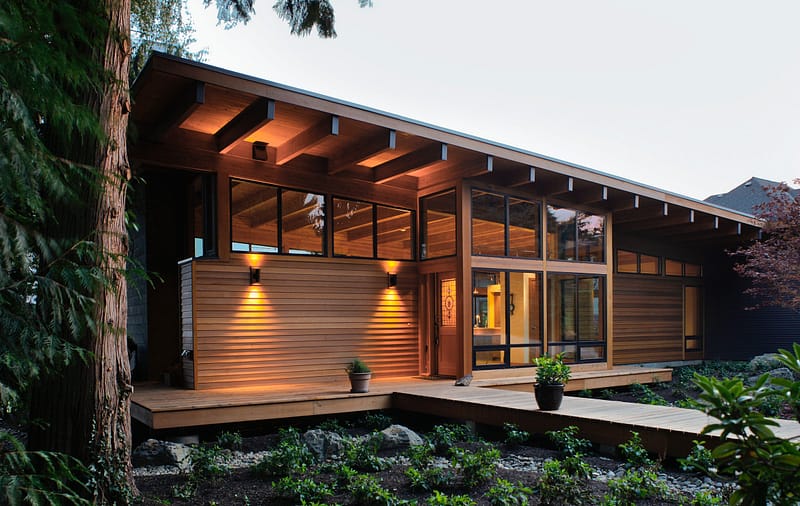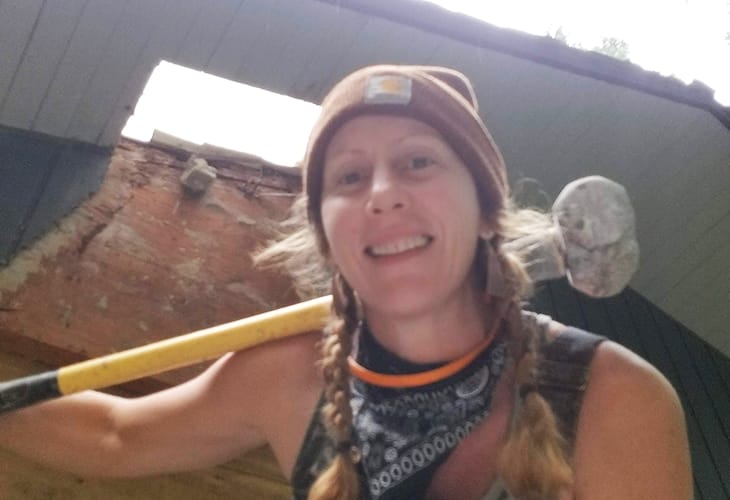When you picture “green remodeling” in your mind’s eye, the one image you’re likely to overlook is the thing that isn’t there: that big dumpster full of construction waste.
Hammer & Hand discovered years ago that it’s both better environmental practice and better business to largely eliminate dumpsters from job sites. But where does all the construction waste go?
Okay, we’ve all heard the mantra “Reduce, Reuse, Recycle” so many times that the phrase has lost some of its punch. But it does remain relevant today, particularly in the building industry.

“Reduce” means building smaller and building structures that use materials wisely: actions that, down the road, will greatly reduce the construction waste stream. But in terms of going dumpster-less right now, today, “Reuse” and “Recycle” have more immediate relevance to our discussion.
At its most fundamental meaning in the building industry, “Reuse” refers to the simple act of remodeling. One could say that our remodeling work is part of a grand upcycling project: re-purposing houses to meet 21st century needs so they can be reused again and again. But for a remodel project to rank as truly green, the concept of “Reuse” needs to be taken further. Onsite materials need to be salvaged, reclaimed and re-purposed whenever possible. If done in a comprehensive way, this material reuse can make a huge impact on the waste stream coming from a remodel project, and help eliminate the need for a dumpster. But this “Reuse” does require some management acumen and planning. To this end, Hammer & Hand has established a series of locations for stockpiling reclaimed material, from small close-in locales for quick turnaround of upcycled wood, to our large “lay down yard” in Canby to accommodate big supplies of salvaged building material. And we’ve developed an inventory tracking system and structured our operations to facilitate efficient sourcing and transport of salvaged materials in order to eliminate extra truck trips and keep costs down.
Yet even for the most carefully salvaged project, “Recycle” continues to be a key component in dumpster-free remodeling. We have a dedicated recycling expert on staff equipped with a truck, a GPS navigation system, and extensive knowledge of the various recycling facilities in town. With strategic routing, this coordinator can get to 20 Hammer & Hand jobs in one day, picking up everything from scrapped metal (the cash from which “funds” some of our recycling effort) to cardboard packaging and anything in between. The result: no dumpster is required. We save money that otherwise would have gone to the dumpster provider and landfill, everyone involved feels good about reducing waste, and it all pencils out. We can do well by doing good.
(Note: we do use dumpsters occasionally when dealing with certain roofing materials and some damaged drywall. But dumpsters have become the exception in our processes, not the rule)
So dumpster-free remodeling may take more thought than the conventional approach. But it’s good for the planet, efficient, and cost-effective. Really, it just takes some careful operations management and strategic thinking … but that kind of thing gets us excited around here. We’ve freely confessed to being building nerds, but we’re sustainable business nerds, too. (Though you may have gathered that on your own.)
– Zack (Connect with me at +ZacharySemke)



